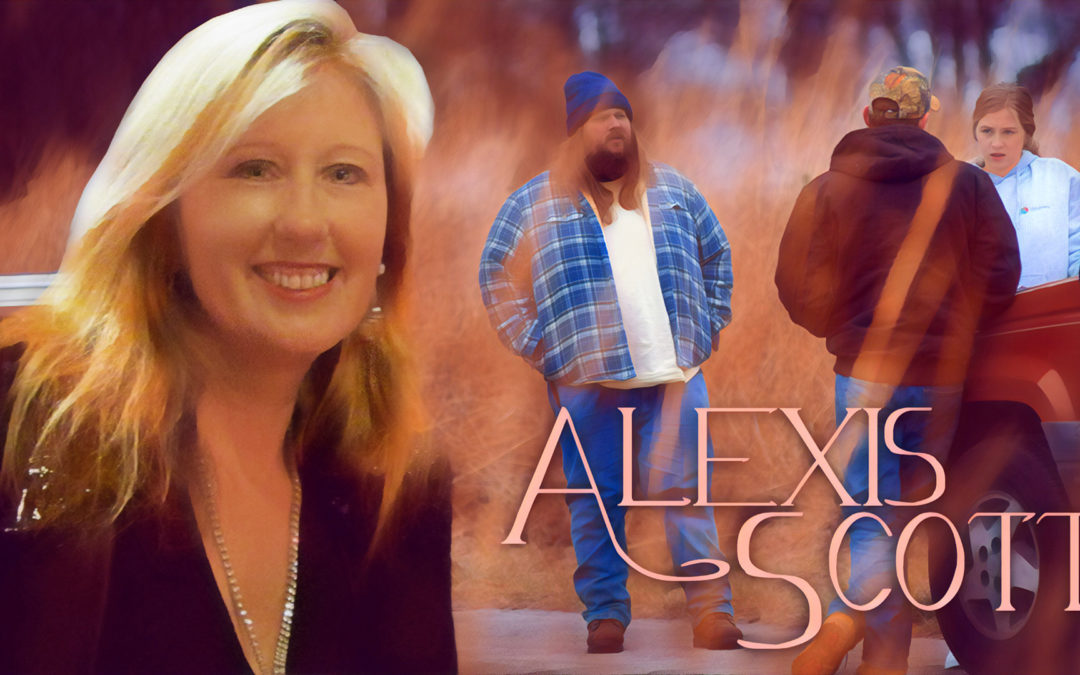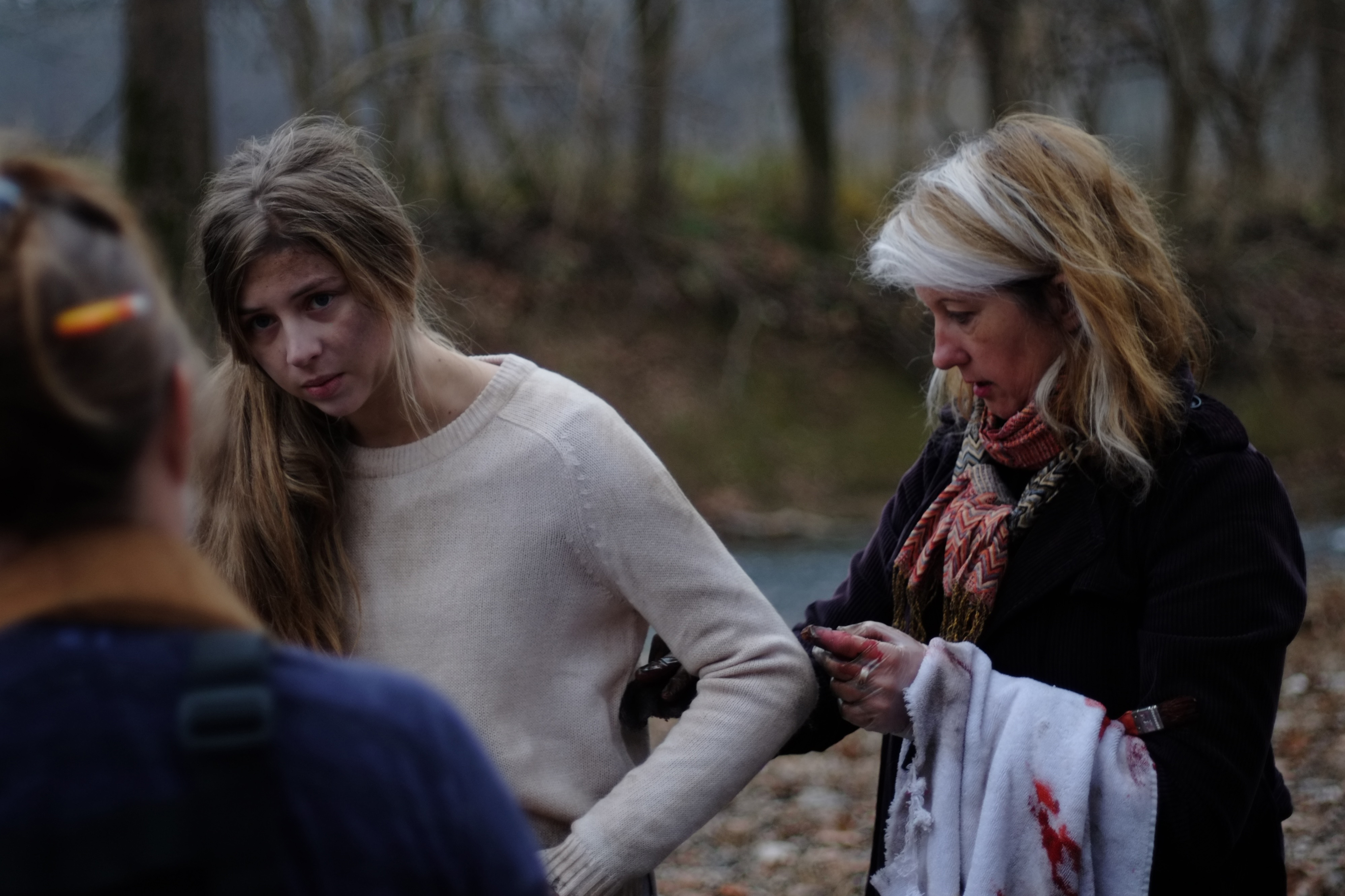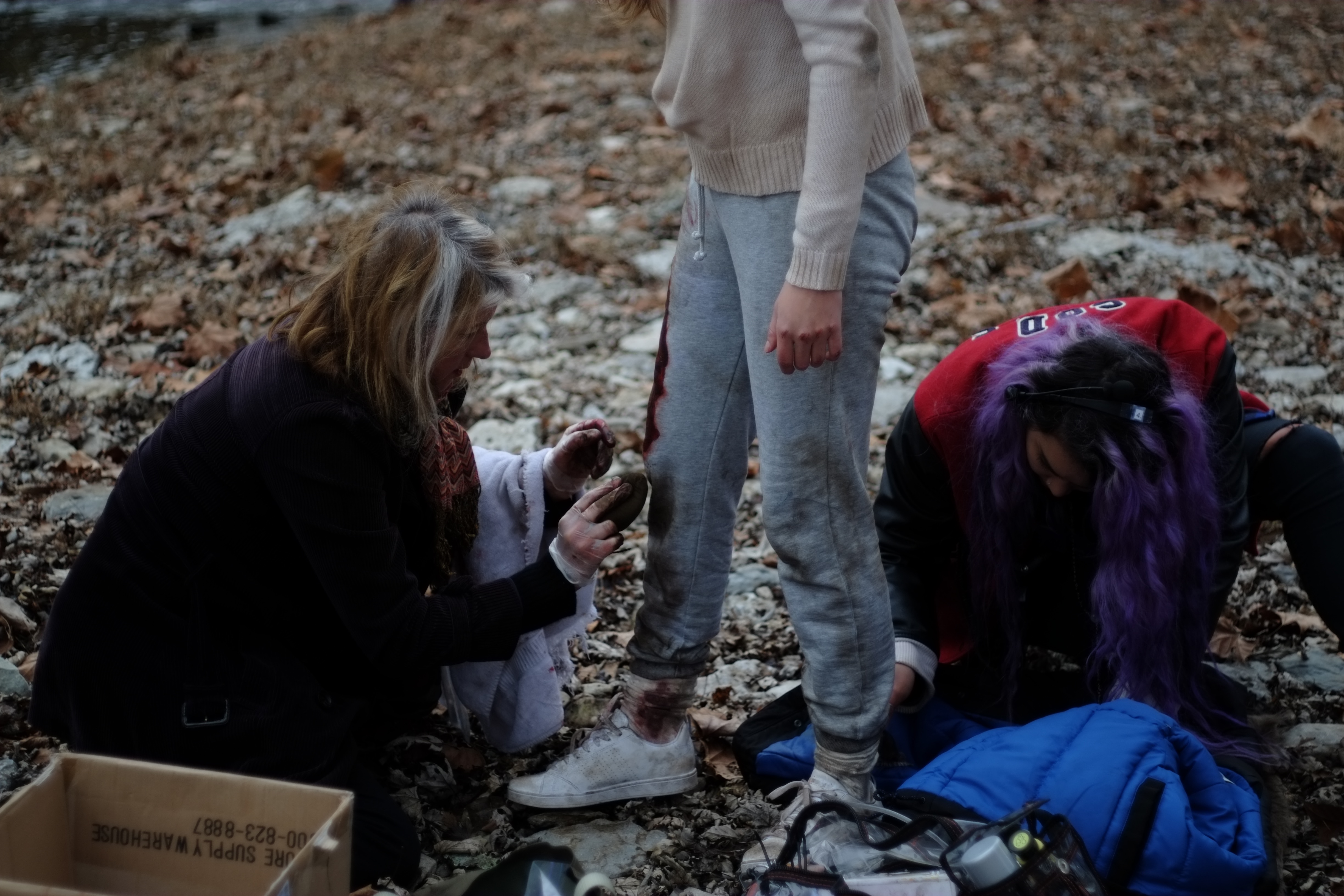About Alexis Scott
Alexis Scott is a costume designer with over 30 years of experience in the entertainment industry. She has designed over 40 films and TV shows for directors including Wim Wenders (Land of Plenty), Vincent Gallo (Buffalo 66), Alex Cox (Repo Chick), Chris Eyre (Skinwalkers, Edge of America) and Abel Ferrara (Game of Death). Her most recent projects include Lunacy Productions’ Rust Creek, Message From the King starring Chadwick Boseman and Luke Evans, and Soy Nero (Selected Berlin Film Festival 2016).
LU: How did you get started in the entertainment industry?
Alexis Scott: When I was in college in the early 90s, I worked at a costume shop that was creating costumes for the San Francisco Ballet. We were building the Nutcracker. At the same time, the shop had a mainstream job of making puppets. There, I learned foam work, puppetry, millinery, all that kind of thing. Then I moved to New York and started working with a costume designer pretty much right away, and that’s how I started working in films.
LU: Would you consider working with that costume designer in New York your big break? Or was that more of an introductory experience?
AS: I would say it was an introductory experience. To filmmaking, to going on location, just learning the low-budget film world. My big break was when I was swatching fabrics for a costume designer on a film called The Marrying Man. She called me after the film wrapped and asked me if I wanted to come to Los Angeles and work on The Addams Family movie and get in the union.
So, without knowing how to drive, I accepted the job, learned how to drive at the 14th Street Driving Academy, and moved to LA.
LU: How has the environment has changed for costume designers getting into the industry now compared to when you started?
AS: It’s so much easier now, because there are so many more jobs. Especially with streaming and everything. The union just has their doors wide open. When I started, I worked in New York for three years and I couldn’t get in the union there. It was a big deal to have that opportunity offered to me. Now, it’s very easy.
LU: What are the most essential skills that a costume designer must have?
AS: Talent is important. And political skills.
LU: What do you mean by political skills?
AS: Well, costume designing is a job that is still fighting to get respect in our industry. In the past, there were a lot of very famous male costume designers like Adrian and Travis Banton, etc. But recently costume designing has been primarily done by women and I don’t think it gets the same respect in our industry that the other departments have. I’ve dealt with that over and over.
Most people seem to think that the opening shot, the wide shot, is more important than what’s actually primarily on screen for most of the film. I hope that people who get into costume design today assert themselves to a place at the table with the other heads of department. Right now, costume design is relegated to what they call “the vanities,” which is hair and makeup and wardrobe. And I think that’s primarily because it is work that’s done by women.
Alexis Scott on the set of Rust Creek with lead actress Hermione Corfield.
LU: What are the most essential qualities in directors that make the set and your job as a costume designer run smoothly?
AS: Directors need to have good communication skills. It’s good if they are encouraging to their team and supportive and are able to ask for what they want in a positive way. The advice I would give would be for directors to get all their department heads together. Meetings are very important. Everyone needs to be included to get on the same page and be informed about the visual direction.
Costume designers sometimes get a lot of the important information later because we don’t go on the tech scouts. When a young costume designer comes in, it’s important to make sure that you’re informed and up to speed on anything that’s changed over the course of the scout. Things change after the initial reading of the script. It’s important to forge a really good relationship with your production designer, because they have a lot of the current information that you might not have.
LU: How did you end up getting involved with Rust Creek?
AS: A friend of mine mentioned the position to me, and at that time I was eager to get out of LA. I had never been to Kentucky before.
The location was just beautiful. I was really happy with the way the costumes looked in the forest. I think people have a derogatory view of Kentucky, especially on the coast, and I found the local crew members and the location just as good or better than anywhere else. It was really beautiful there. There were icicles hanging off the rocks, and moss and things that we don’t really have in Los Angeles. The autumn leaves, the parks, the food was great, everything. I definitely enjoyed my time at that location.
LU: How did you go from script to the actual costume pieces that the main character wore in the film?
AS: In the original script, she was supposed to be in her underwear throughout the film and when we arrived in Kentucky, the team realized that would not be feasible due to the cold. They changed the outfit to sweatpants. In the beginning of the film, she was wearing a sweatshirt that had the name of the company that she’s going to the interview for, Landler-Bayne. That was in the script.
But at some point, that sweatshirt was going to come off and she was going to have something else underneath and what was it gonna be? My initial choice was kind of a nude colored thermal that we got at Walmart, but again, it was just like too thin and too cold. But I was going into that colorless palate choice.
We ended up with that millennial pink sweater because the nude thermal was just not thick enough. We couldn’t put anything under it, whereas the sweater we could sew in something warmer inside.
It’s really great when it ends up looking planned, but mostly it’s always just a series of happy accidents. You can only design so much because really there’s just a lot of circumstances that influence how it will all come together. You have to be ready to navigate all the possibilities. I bring the choices, so whatever they choose from, it’s still me bringing it.
As far as resources, that’s one of the things that we’ve lost in this time because of chain stores. We’ve really lost the regionalism and local style in this country.
Alexis Scott and Monica Thorne distress a costume on the set of Rust Creek.
LU: What were the challenges for you as a costume designer on Rust Creek?
AS: The main costume challenge of Rust Creek was how do we make it so our main character is not in the same outfit for the whole movie? And when do those changes occur? It all has to be planned out far ahead because we’re shooting out of order. The continuity was really a challenge.
The location was also a challenge. We had to be prepared with a lot of multiples because changes occur in the middle of shooting, and our costume base was far away from set.
For example, a costumer would be on set, and would be getting the direction, “Oh, now we’re gonna get a shot from some other scene, and we need those other bloody sweatpants.”
And this is in locations where people had to climb down with a rope to get to where we were shooting. Hand over hand as if you were on a rope tow at a ski resort or something. Hoisting yourself down the hill. Also having to carry all these different versions. We did have this great pop-up tent for our main character to change in. She could run in and change to another version of the costume.
Kudos to my set costumer, Monica Thorne. She handled it all brilliantly.
LU: What was the experience like on set, with the producers, the director, and all the department heads?
AS: With our producer Stu Pollard being from Louisville, Kentucky, he had a lot of great local connections to make my job easier. And the crew was great. If you’ve ever seen Truffaut’s Day For Night, about a film crew, they’re the same people, the same types wherever you go.
Jen is a very strong director. She’s a great communicator. She instantly knew what she wanted.
LU: What is it like being on a female-directed set?
AS: I feel like it’s just a little bit more empathetic. There’s a little bit more listening, there’s a little bit more cooperation and respect. That’s what is important, respect. I feel like with female heads of departments, I think what comes with that is more respect for my department and for each other.
LU: What do you want the up-and-coming costume designers in Los Angeles to learn from your experience, your knowledge, and all the films that you’ve worked on?
AS: I would say research. It’s such an important part of our job, and it’s one of my favorite parts of the job. It’s just very important to maintain your own library, your own research of photos, the images that you respond to.
Today, pretty much everyone does their research online, but there’s a lot more out there than what’s online. What’s online has been streamlined and limited. You have to go to print to find things that are really riveting.
You have to be creative about your research and think about the character’s story. What is it about these pictures that tell the story and evoke the mood of the character? It’s important to look for that and to keep your own library of images because these are your talking points.
Most people don’t sketch. Or even take photographs. I think that’s an important part of the job — not just shopping, not just fashion. You’re telling a story. For most of the films I’ve worked on, fashion isn’t the story. The story is the character. You have to stay out of the way a lot of times.
LU: Any final thoughts on filmmaking to share?
AS: I believe in cinema. Florian Henckel von Donnersmarck, who directed The Lives of Others, was recently talking about how important cinema is and to not let it die. I agree with him because sometimes the streaming television series, they’re like soap operas. Serialized stories have been around since Charles Dickens. But being able to tell a story in two hours — it’s an art form. It’s a different art form, and we don’t want to lose either one.
Alexis Scott’s latest film, Rust Creek, is in theatres and on VOD platforms now! Check it out today, and keep reading the Lunacy Productions Blog for more info on the film!



